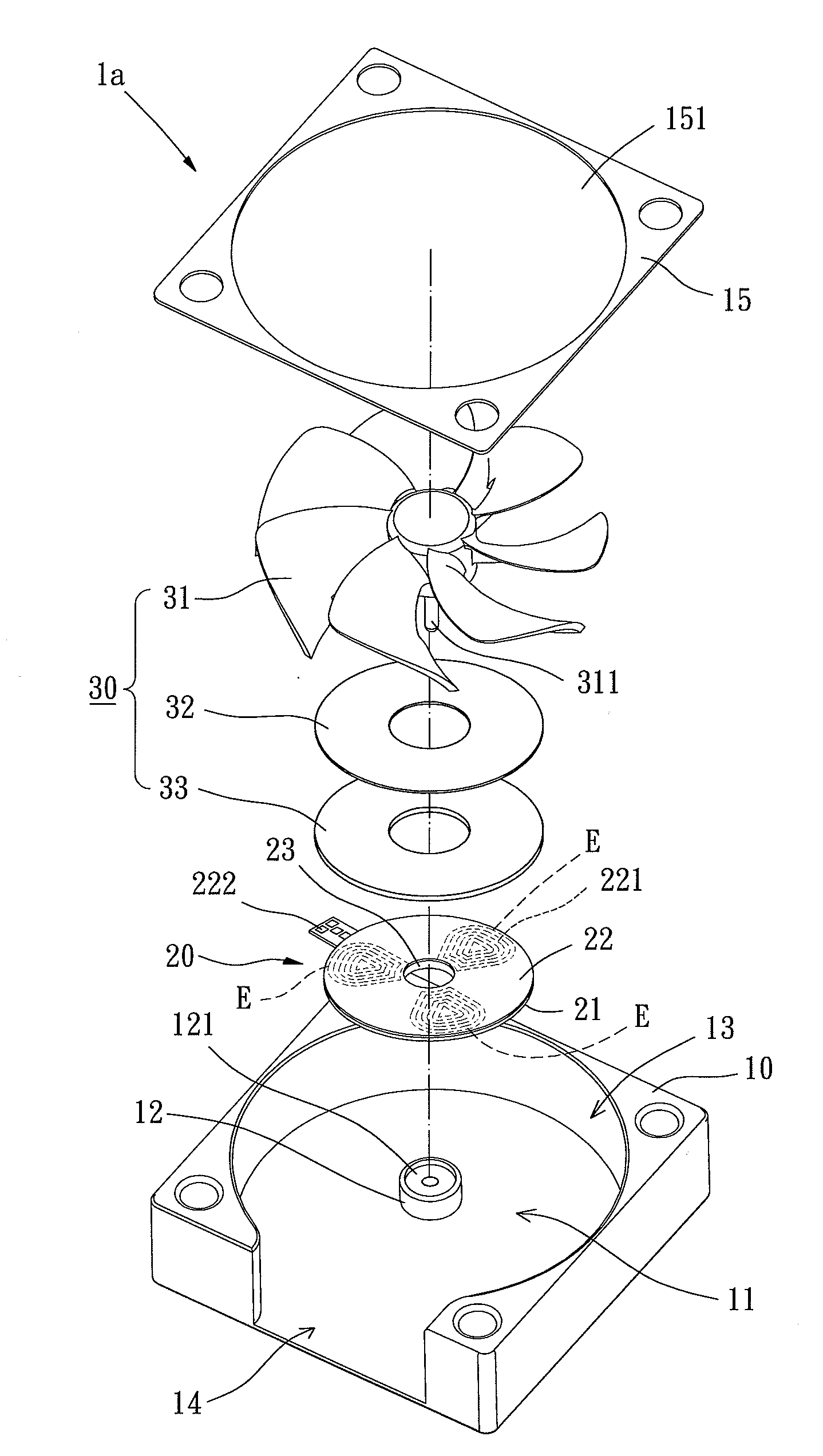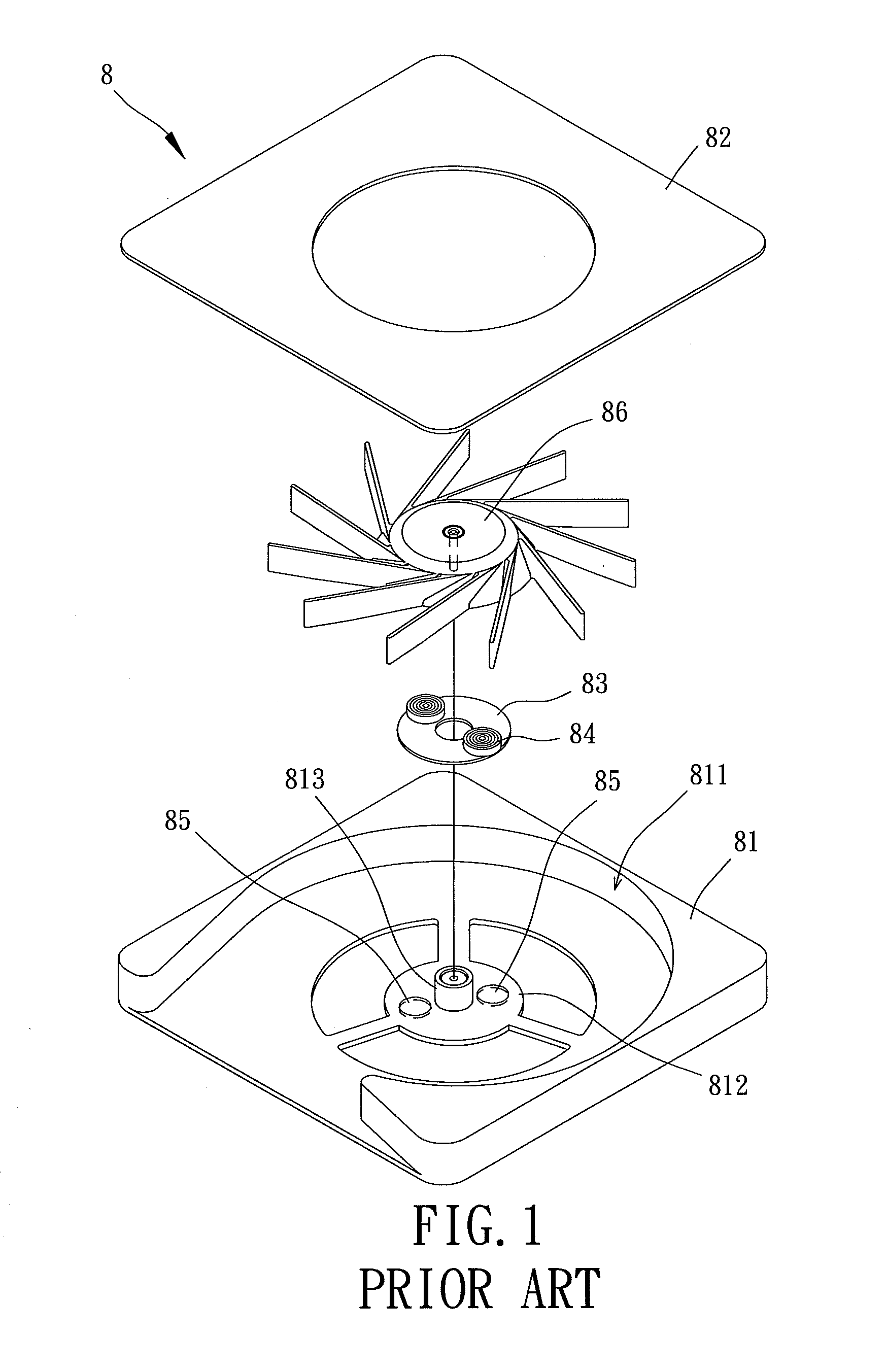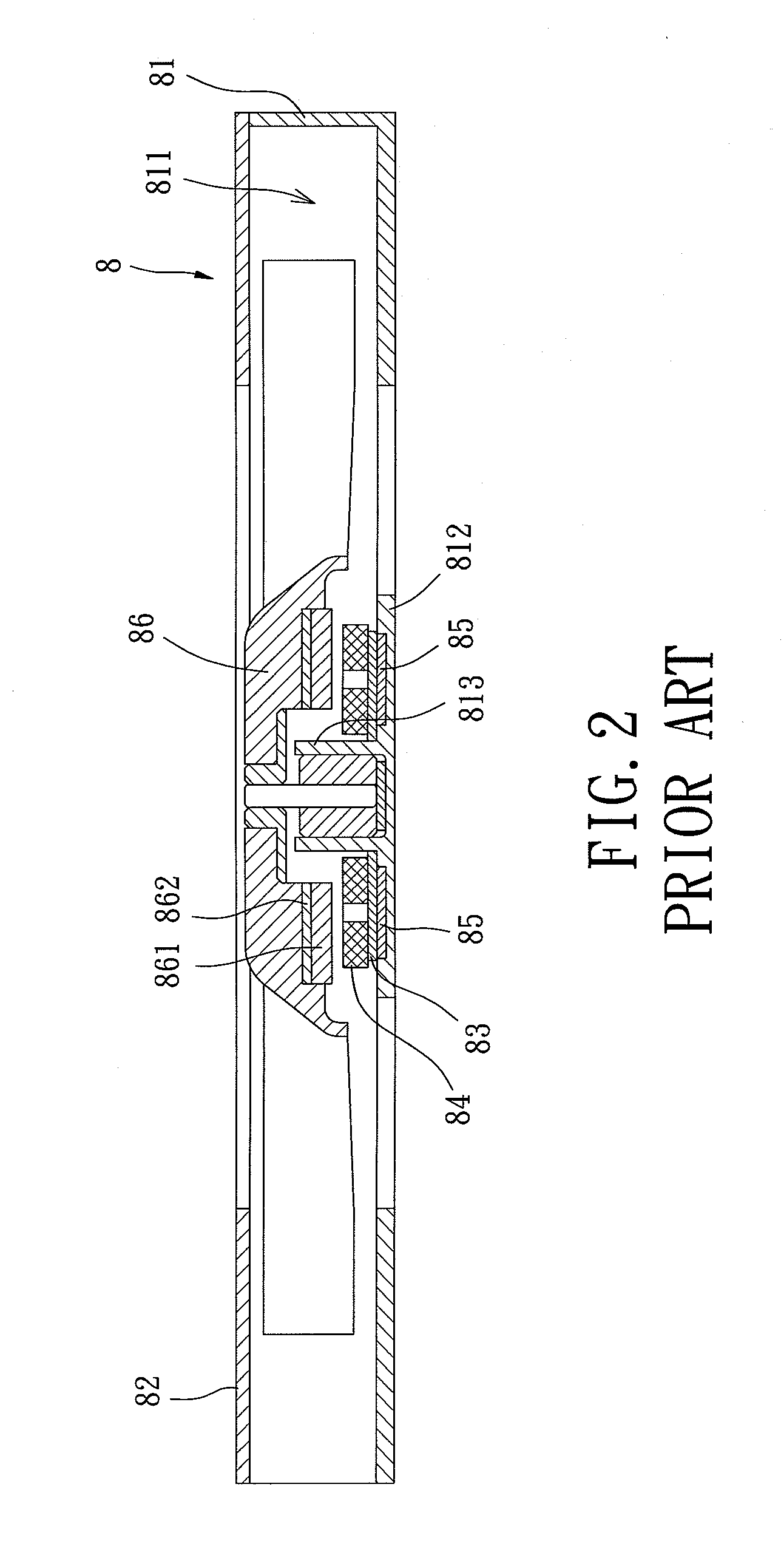Miniature Heat-Dissipating Fan
a heat-dissipating fan and miniature technology, applied in the direction of dynamo-electric machines, piston pumps, non-positive displacement fluid engines, etc., can solve the problems of inability to minimize the dimensions the difficulty of reducing the entire axial thickness of the conventional heat-dissipating fan, and the inability to reduce the overall thickness of the miniature heat-dissipating fan
- Summary
- Abstract
- Description
- Claims
- Application Information
AI Technical Summary
Benefits of technology
Problems solved by technology
Method used
Image
Examples
Embodiment Construction
[0031]A miniature heat-dissipating fan of a first embodiment according to the preferred teachings of the present invention is shown in FIGS. 5 and 6 of the drawings. According to the first embodiment form shown, the miniature heat-dissipating fan designated numeral “1a” includes a casing 10, a stator 20 and a rotor 30.
[0032]The casing 10 defines a compartment 11 and has a shaft tube 12 in the compartment 11. The shaft tube 12 preferably receives a bearing 121. The casing 10 has an air inlet 13 and an air outlet 14 both connecting to the compartment 11. Furthermore, a lid 15 is mounted to one side of the casing 10 where the air inlet 13 is formed, with the lid 15 having a through hole 151 aligned with the air inlet 13.
[0033]The stator 20 has a first leakage flux absorber 21 made of magnetically conductive materials. Preferably, a printed circuit board is attached to a surface of the first leakage flux absorber 21 and a coil layer 22 is formed on the printed circuit board by layout. T...
PUM
 Login to View More
Login to View More Abstract
Description
Claims
Application Information
 Login to View More
Login to View More - R&D
- Intellectual Property
- Life Sciences
- Materials
- Tech Scout
- Unparalleled Data Quality
- Higher Quality Content
- 60% Fewer Hallucinations
Browse by: Latest US Patents, China's latest patents, Technical Efficacy Thesaurus, Application Domain, Technology Topic, Popular Technical Reports.
© 2025 PatSnap. All rights reserved.Legal|Privacy policy|Modern Slavery Act Transparency Statement|Sitemap|About US| Contact US: help@patsnap.com



